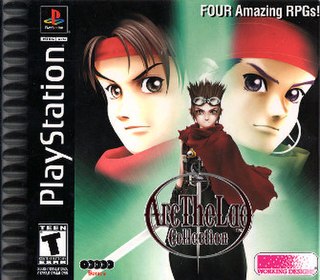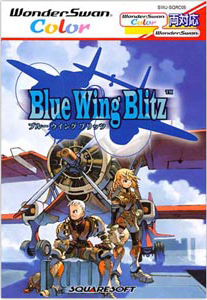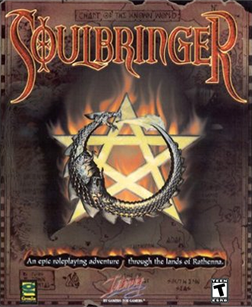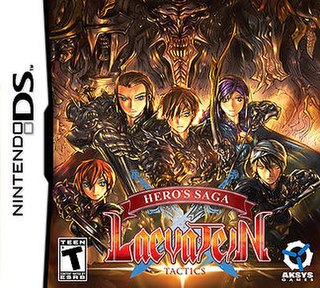
Paper Mario is a 2000 role-playing game developed by Intelligent Systems and published by Nintendo for the Nintendo 64 home video game console. Paper Mario is the first game in the Paper Mario series. First released in Japan in 2000 and then internationally in 2001, Paper Mario was later re-released for Nintendo's Wii Virtual Console in July 2007, the Wii U Virtual Console in April 2015, and the Nintendo Switch Online + Expansion Pack on December 10, 2021.

Gauntlet Legends is an arcade game released in 1998 by Atari Games and Midway Games. It is a fantasy themed hack and slash styled dungeon crawl game, a sequel to 1985's popular Gauntlet and 1986's Gauntlet II and marks the final game in the series to be produced by Atari Games. Its unusual features for an arcade game included passwords and characters that could be saved, enabling players to play over the course of a long period.

Paper Mario: The Thousand-Year Door is a 2004 role-playing game developed by Intelligent Systems and published by Nintendo for the GameCube. The Thousand-Year Door is the second game in the Paper Mario series following Paper Mario, and is part of the larger Mario franchise. In the game, when Mario and Princess Peach get involved in the search for a mystic treasure that holds great fortune, Peach is kidnapped by an alien group called the X-Nauts; Mario sets out to find the treasure and save the princess.

Legend of Mana is a 1999 action role-playing game developed and published by Square for the PlayStation. It was the fourth game released in the Mana series, following 1995's Trials of Mana. Set in a high fantasy universe, the game follows an unnamed hero as they restore the land of Fa'Diel by creating the world around them and completing a number of interrelated quests in order to restore the Tree of Mana.

SaGa Frontier 2 is a role-playing video game developed and published by Square for the PlayStation. It is the eighth original game in their SaGa series. Initially released in Japan in April 1999, an English version was made available in North America in February 2000 by Square Electronic Arts and in PAL regions the following March by Square. Development for the title was headed by series creator Akitoshi Kawazu, with music by Masashi Hamauzu. The game features an art style unique to the series at the time it was released, utilizing hand-painted watercolor backdrops and characters to give the game a storybook feel. Like other SaGa games, gameplay is largely non-linear, giving the player multiple paths to follow in order to complete the game.

Koudelka is a role-playing video game developed by Sacnoth for the PlayStation. The game was published by SNK in Japan in 1999, and by Infogrames internationally in 2000. Set in the haunted Nemeton Monastery in Wales, the plot follows protagonists Koudelka Iasant, Edward Plunkett and Bishop James O'Flaherty as they uncover Nemeton's secrets and confront monsters created from its dark past. Its gameplay blends exploration and puzzle elements with turn-based battles waged on a grid.

Legend of Legaia is a turn-based role-playing video game. It is followed by Legaia 2: Duel Saga.

Summoner is an action role-playing game developed by Volition and published by THQ. It was released as a launch title for the PlayStation 2 in 2000, and was subsequently ported to Microsoft Windows and Mac OS the following year. In the game, the player plays the role of Joseph and can assemble a team of compatriots and summon powerful monsters. The game has a world map, involved storyline, and unique hybrid combat system involving real-time and turn-based mechanisms.

Guardian Heroes is a 2D side-scrolling beat 'em up video game in the vein of Final Fight or Golden Axe, but with RPG elements. The development team called it a "fighting RPG". Guardian Heroes was developed by Treasure and released in 1996 for the Sega Saturn video game console. A sequel was released in 2004 for the Game Boy Advance entitled Advance Guardian Heroes.

Wild Arms 2, known in Japan as Wild Arms: 2nd Ignition, is a 1999 role-playing video game for the PlayStation, and the second installment in the Wild Arms series, developed by Media.Vision and published by Sony Computer Entertainment.

Arc the Lad Collection is a compilation of the Arc the Lad RPGs for the PlayStation. The games were localized by Working Designs. Plans to localize the games had been fostered by Working Designs since the late 1990s, but the compilation was not released until 2002.

Battle Hunter, known in Japan as Battle Sugoroku: Hunter and in Europe as The Hunter, is an anime-styled tactical role-playing game, released for the PlayStation in 1999. It was released in Japan as part of the SuperLite 1500 series of budget games. The game revolves around a player-controlled hunter that must compete with three other hunters in order to win a relic, and makes heavy use of traditional RPG conventions such as dice and tile-based movement.

Hoshigami: Ruining Blue Earth is a tactical role-playing game (RPG) developed by MaxFive and published by Atlus USA in 2001, and by the former in Japan in 2002. The game was never released in Europe or Australia. A remake titled Hoshigami: Ruining Blue Earth Remix was released for the Nintendo DS in 2007 by Arc System Works.

Blue Wing Blitz (ブルーウィングブリッツ) is a Japanese-exclusive tactical role-playing game developed and published by Square on July 5, 2001 for the WonderSwan Color and compatible with the WonderSwan.

Crystal Defenders is a set of two tower defense video games developed and published by Square Enix. The games use the setting of Ivalice and design elements from Final Fantasy Tactics A2: Grimoire of the Rift, forming part of the wider Final Fantasy franchise. The games feature a selection of characters sporting Final Fantasy-based character classes, and play out tower defense scenarios against recurring series of monsters. The first game in the series is Crystal Guardians, which was released in three parts for Japanese mobile phones in 2008. It was adapted for iOS later that year as Square Enix's first game for the platform, and renamed Crystal Defenders. Under that name, the game was also released between 2009 and 2011 for Android, Xbox Live Arcade, WiiWare, and PlayStation 3 and PlayStation Portable via the PlayStation Store. It was re-released with graphical improvements for iOS as Crystal Defenders Plus in 2013. A sequel, Crystal Defenders: Vanguard Storm, was released for iOS in 2009.

Soulbringer is a fantasy RPG developed by Gremlin Interactive and published by Interplay Entertainment and Infogrames in 2000. It was later packed and shipped in combination with Interplay's Planescape: Torment.

Hero's Saga Laevatein Tactics, known in Japan as Eiyū Senki Laevatein, is a tactical role-playing game developed and published in Japan by GungHo Works on December 4, 2008, and published in North America by Aksys Games on October 15, 2009 for the Nintendo DS.

Ys Seven is a 2009 action role-playing game developed by Nihon Falcom. An installment in the Ys series, it was first released in Japan for the PlayStation Portable in September 2009. Xseed Games released the game in 2010 in North America in August, and Europe in November. The game was later released in Australia in February 2013. It was also released for Windows in China in June 2012, and worldwide by Xseed Games in August 2017.

Growlanser: Wayfarer of Time is a tactical role-playing game developed by Career Soft and published by Atlus. It was originally released for the PlayStation 2 in Japan in December 2003, and later for the PlayStation Portable in Japan in August 2011 and in North America in July 2012. It is the fourth installment in the Growlanser series, with character designs by Satoshi Urushihara. A visual novel fan-disc Growlanser IV: Wayfarer of Time - Return, containing three short stories, was released on PS2 in 2005.

God Wars: Future Past is a tactical role-playing game developed by Kadokawa Games, and published by NIS America outside of Japan. The original version of the game was released in June 2017 for the PS4 and PS Vita. An expanded version of the game, God Wars: The Complete Legend, was released worldwide on the Nintendo Switch on September 4, 2018. The expanded version was also released on PS4 and PS Vita exclusively in Japan.




















